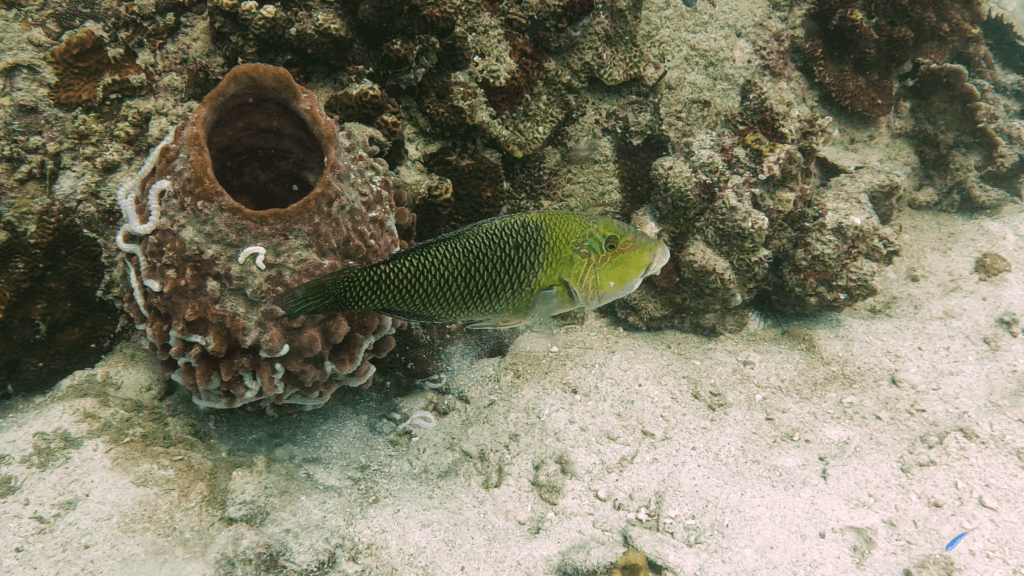Blackeye thicklip wrasse

The Blackeye thicklip wrasse (Hemigymnus melapterus) belongs to the wrasse family (Labridae) and originates from the Indo-Pacific region.
This medium-sized fish can reach lengths of up to 50 cm, possessing a deep, relatively compressed body, a large head, and thick-lipped mouth parts. Body coloration changes with age. Juveniles have a ground color with yellow-green transverse bands, a wide white diagonal band behind the gill cover (operculum), an orange caudal fin, and a greenish-gray front. Mature females exhibit green coloration behind the diagonal line, with black edges on their scales. A complex network of pink lines, highlighted with turquoise, may be present from the snout towards the head. Fully developed males have emerald-green bands behind each scale, a blue margin around the eyes, and green snouts and heads with pink patterns highlighted in turquoise.
This species inhabits tropical and subtropical waters of the Indo-Pacific, from the eastern coast of Africa, including the Red Sea, to Polynesia, and from New Caledonia to southern Japan. It prefers areas with corals, coral rubble, sandy patches, outer reef slopes, and drop-offs, often found at depths exceeding 40 meters. Juveniles, however, tend to be more secretive, seeking shelter in branching corals.
The Blackeye thicklip wrasse typically leads a solitary life or lives in small groups. As a benthic predator, it primarily feeds on small marine invertebrates such as crustaceans, mollusks, worms, and echinoderms, captured on or within the substrate. Besides foraging among coral branches, it can take mouthfuls of sand, sift out food items, and then expel the sand through its gill covers. Like most wrasse species, it exhibits protogynous hermaphroditism, meaning individuals begin life as females with the potential to later transform into males.
